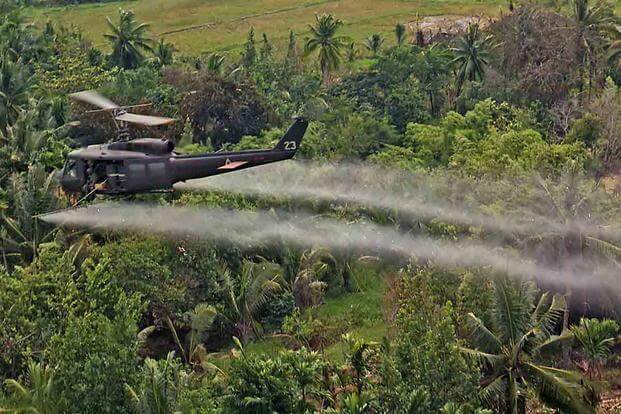Decades later, the legacy of Agent Orange isn't just illnesses, birth defects and continued deforestation in Vietnam. It's also the question of the United States' legal liability for its use, how to clean up the damage caused by military-produced herbicides and how to care for its victims.
Of all the controversies surrounding the Vietnam War, one of the most enduring continues to be the use of Agent Orange. The United States military sprayed nearly 12,000 square miles of Vietnamese jungles with the chemical defoliant over a 10-year period in an effort to clear large areas of jungle that provided Viet Cong guerrillas with cover, shelter and food.
Among those victims are an ever-growing number of veterans who worked with the chemical and are affected by an equally expanding number of health conditions, some of which are considered presumptive by the Department of Veterans Affairs, and others that are not.
Related: Get VA Disability Pay for Agent Orange-Related Conditions
The chemical contaminant in Agent Orange can have a half-life of up to 20 years, but when buried or leached below the soil surface or in river sediment, it can remain up to 100 years or more. It's an ongoing problem that will not disappear with the last Vietnam War veteran.
What Is Agent Orange?
Agent Orange is one of a series of chemical herbicides used during the Vietnam War. Known as color-coded herbicides, or "Rainbow Herbicides," the spectrum also included Agents Green, Pink, Blue, Purple and White, along with three variations of Agent Orange. They could be identified by a colored band around the drum containing the chemical.
Of all herbicides used in South Vietnam, only Agent Orange was formulated differently from the materials for commercial application that were readily available in the United States.
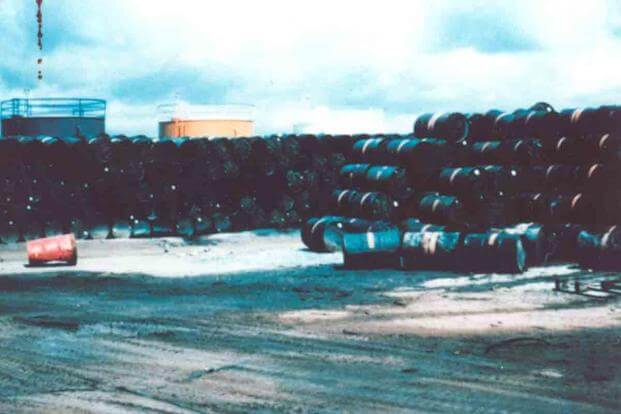
It was created in 1940, decades before American involvement in Vietnam and even before the United States entered World War II. Agent Orange was used in the United States as an agricultural defoliant, as it had the ability to kill some plants while leaving others unaffected.
The U.S. government compelled nine American companies to make Agent Orange for military use, including Dow Chemical and Monsanto, using the Defense Production Act of 1950. By this time, Agent Orange was strictly for the military, which controlled its transportation, storage and later use.
The chemical itself is a mixture of two herbicides, 2,4-D and 2,4,5-T. Both of the ingredients that make up Agent Orange became common herbicides in American industrial agriculture. 2,4-D is still used today, but 2,4,5-T use ended in the West in 1985. The problem with 2,4,5-T is its production process: the process itself contaminates the chemical with a byproduct called TCDD, a dioxin.
Dioxins are persistent organic pollutants, also known as "forever chemicals." While Agent Orange as a whole dried quickly and broke down when exposed to sunlight when not bound to soil, leaves or grass, the TCDD dioxin contaminants in Agent Orange do not. TCDD is a human carcinogen and the most harmful of all dioxins.
The Monsanto Chemical Company reported that the TCDD in Agent Orange could be toxic as early as 1962. The President's Science Advisory Committee reported the same to the Joint Chiefs of Staff that same year. Studies from 1954 onward confirm the toxicity of both herbicides used in Agent Orange.
Why Agent Orange Was Used In Vietnam
During World War II, the U.S. military didn't use a chemical defoliant in combat, but by the time American advisers were sent to South Vietnam, the U.S. had already developed a delivery system for it. Moreover, the United Kingdom had already used Agent Orange in combat while fighting rebel forces in Malaya, setting an internationally recognized precedent for the legality of the tactic.
The first U.S. defoliation missions in Vietnam were launched in 1961, near the village of Dak To. In 1962, while American Special Forces were operating along South Vietnam's border with Laos, the U.S. Air Force launched Operation Ranch Hand, which would use C-123 cargo planes with rainbow herbicides to defoliate areas near highways, railroads and power lines.
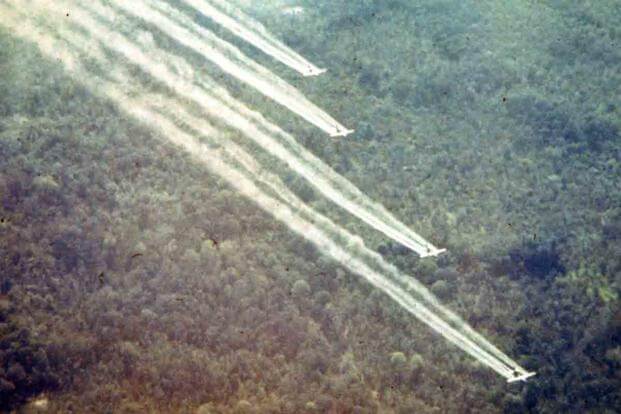
The next expansion of Ranch Hand targeted crops used to feed Viet Cong guerrillas in the A Shau Valley using Agent Blue, which was especially effective at killing rice. Agents Blue and Orange are chemically unrelated, however. Blue is made up of arsenic compounds, still deadly to humans and lives forever in soil and water supplies.
Over time, arsenic poison builds up and magnifies in humans and animals, increasing in toxicity over decades. Four million gallons of Agent Blue would be sprayed over Vietnam between 1961 and 1971, but Blue didn't work on broadleaf vegetation such as jungle canopies as well as the other rainbow herbicides.
Agents Pink, Purple and Green were phased out by 1964, being contaminated with three times as much TCDD as Agent Orange. By 1965, the U.S. military no longer needed presidential authority to spray Agent Orange, and it was being used extensively around Vietnam, particularly against the Ho Chi Minh Trail in Laos and the area between the demilitarized zone and the Cam Lo River known as "Leatherneck Square."
Air Force C-123 cargo planes fitted with 1,000 gallons of herbicide and a delivery system would make spraying runs in three- to five-plane formations. If the area was hot with enemy activity, these runs would be supported by fighter or bomber aircraft to clear the area first.
The goal was to remove cover and concealment used by the Viet Cong and North Vietnamese Army, to reveal hidden bases, communications centers and potential targets, and to improve visibility in tracking troop movements. If C-123 missions couldn't be run, the U.S. used UH-1 and H-34 helicopters, by boats or by hand spraying.
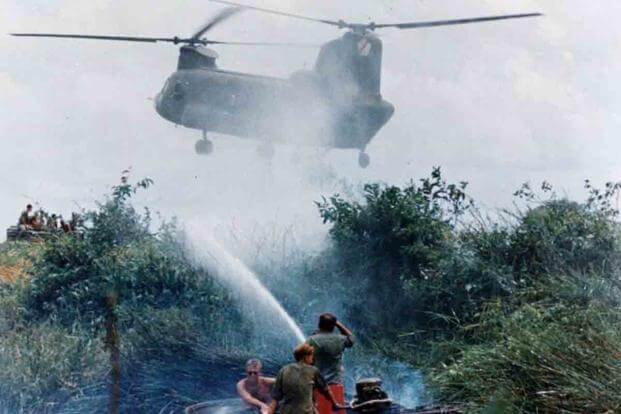
Given the climate of the region, most areas required multiple spray runs to be effective. Eighty percent of the spray hit the jungle canopy, 14% penetrated the inner levels and only 6% affected the jungle floor. The use of Agent Orange tapered off as the health effects of the agent became more and more apparent to Defense Department researchers.
An estimated 19 million gallons of these chemical agents were sprayed over Vietnam, Cambodia and Laos during the war. At least 11 million were Agent Orange.
Da Nang Air Base defoliated the central coast and areas of the Ho Chi Minh Trail. Bien Hoa, Nha Trang, Tan Son Nhut, Phan Rang, Tuy Hoa and Phu Cat Air Bases also housed Agent Orange missions for use inside South Vietnam. These bases, like the target areas, are still contaminated with the chemical.
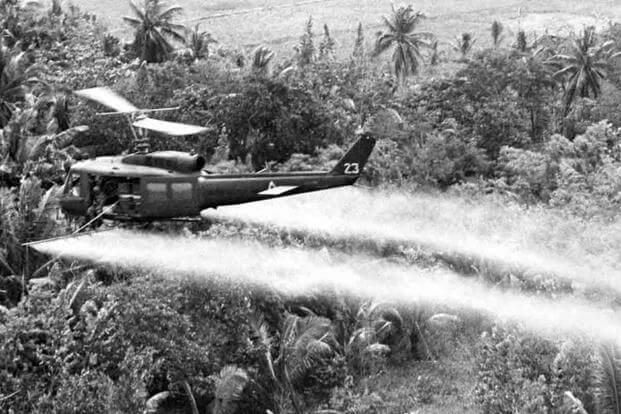
It's still not known how many of the 3.8 million American troops in Vietnam during this period were exposed to the rainbow herbicides.
What Agent Orange Does to the Body
Once introduced into the environment, dioxins like TCDD take a long time to break down, if they do at all. They accumulate in the fatty tissues of animals and humans, building up into the food chain. This means that youth previously unaffected by Agent Orange can be exposed to TCDD by ingesting animal fat contaminated with the toxin.
Acute exposure to TCDD and other dioxins can cause chloracne, a dark, patchy series of lesions on the skin. Longer-term exposure causes alterations in liver function, immune system impairment and damage to developing nervous, endocrine and reproductive systems, according to the World Health Organization.
A known human carcinogen, exposure to Agent Orange causes a number of chronic issues, diseases and cancers. There are 19 presumptive conditions the VA recognizes as connected to Agent Orange exposure, including Hodgkin's disease, lymphomas and cancers affecting the bladder, prostate and respiratory system.
Related: Conditions caused by Agent Orange
If the short- and long-term exposure wasn't apparent, effects of Agent Orange have been shown to skip a generation, meaning genetic effects can reappear in subsequent generations.
What Happened to Agent Orange
The National Institutes of Health began to determine the long-term effect of Agent Orange use in laboratory mice and proved that 2,4,5-T was contaminated with TCDD. Independent research began to show that the same malformities shown in animal testing could happen to humans exposed to TCDD.
In 1969, the American Association for the Advancement of Science (AAAS) called on the Defense Department to end its use of herbicides containing 2,4,5-T -- specifically Agent Orange -- which it eventually did.
The defoliation campaign continued, however. The U.S. military switched to Agent White, a chemical herbicide created by Dow that did not contain the dioxin contaminant. The problem for the commanders in Vietnam was that Agent White took as long as four months to defoliate what Agent Orange did in a matter of hours.
In May 1970, the Air Force flew its last defoliation mission. In February 1971, the DoD announced that all crop destruction missions would also cease. From that point on, Agents Blue and White would only be used in the areas surrounding fire base perimeters, and only on a limited basis.
The remaining 2.22 million gallons of Agent Orange were moved by the U.S. Air Force to Johnston Island Atoll in the South Pacific, where they were incinerated.
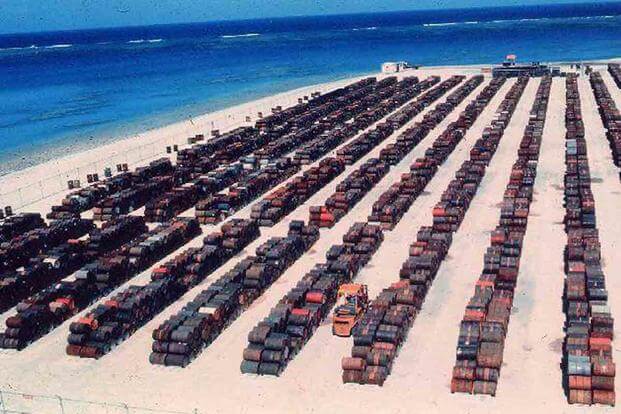
The VA estimates that as many as 2.8 million Vietnam veterans could have been exposed to Agent Orange while between 2.1 and 4.5 million Vietnamese civilians may have been affected by exposure. The numbers do not include American civilians, U.S. Navy veterans stationed off the coast, Vietnamese combatants or those affected after the war's end.
-- Blake Stilwell can be reached at blake.stilwell@military.com. He can also be found on Twitter @blakestilwell or on Facebook.
Want to Learn More About Military Life?
Whether you're thinking of joining the military, looking for post-military careers or keeping up with military life and benefits, Military.com has you covered. Subscribe to Military.com to have military news, updates and resources delivered directly to your inbox.
